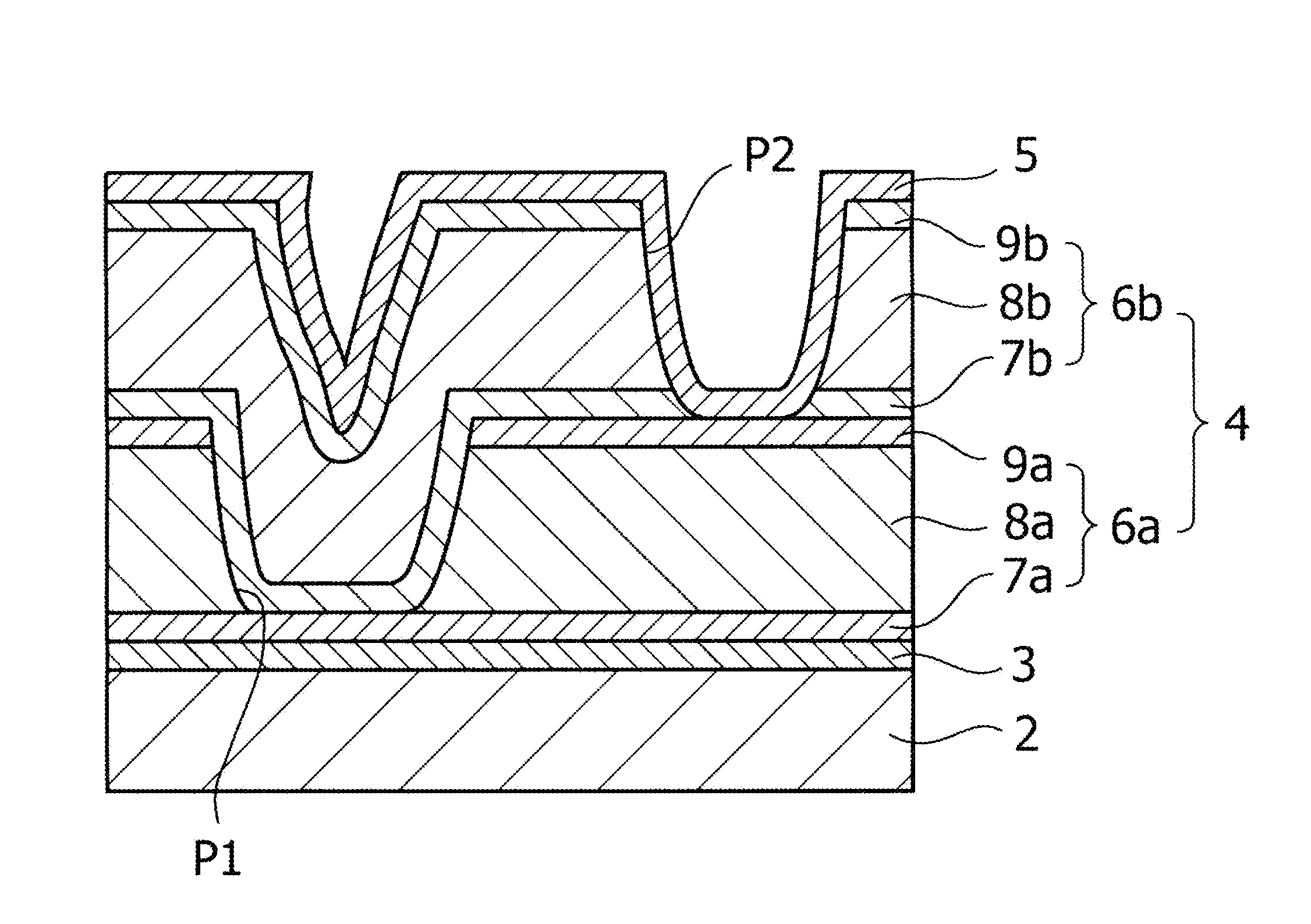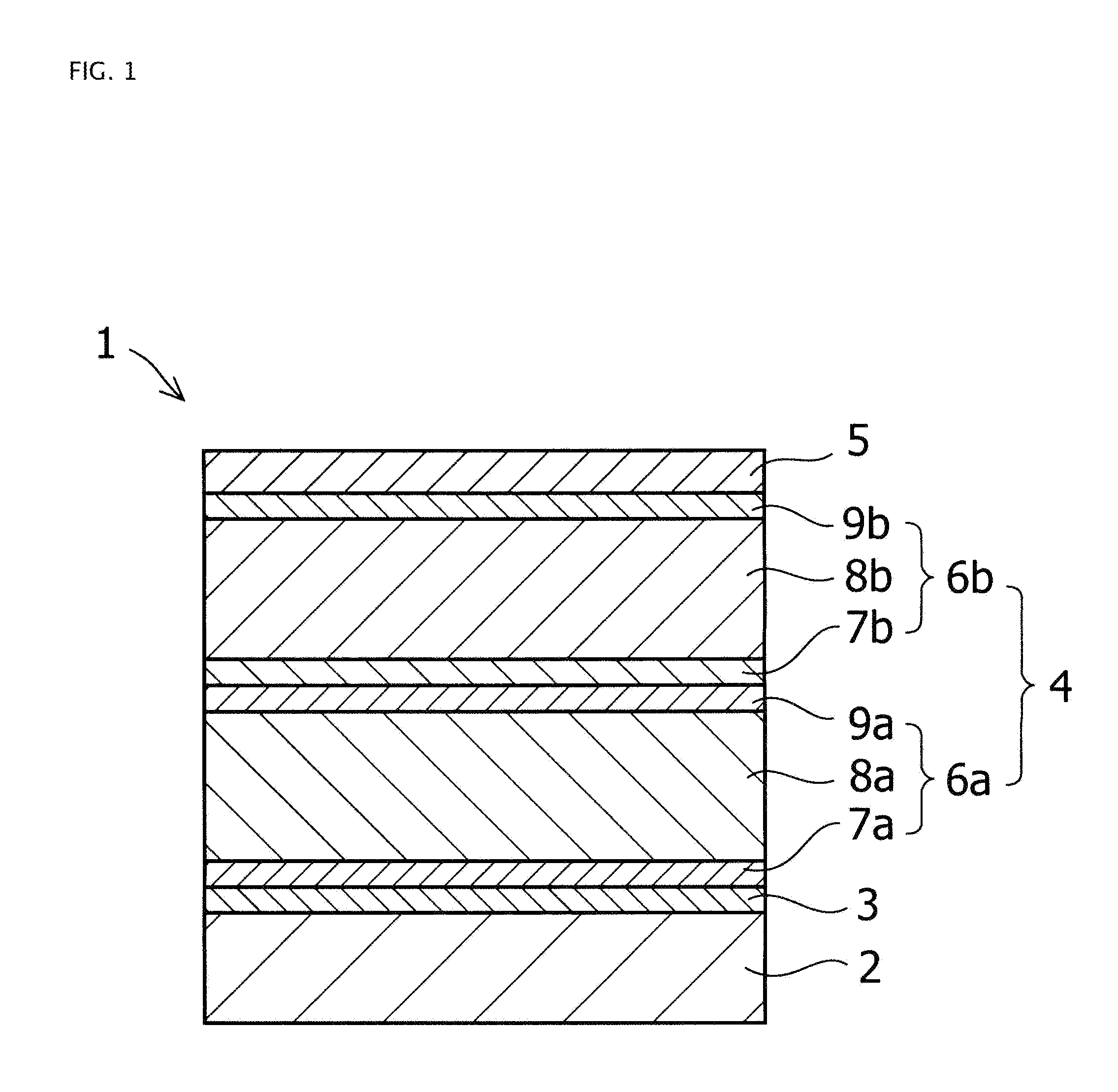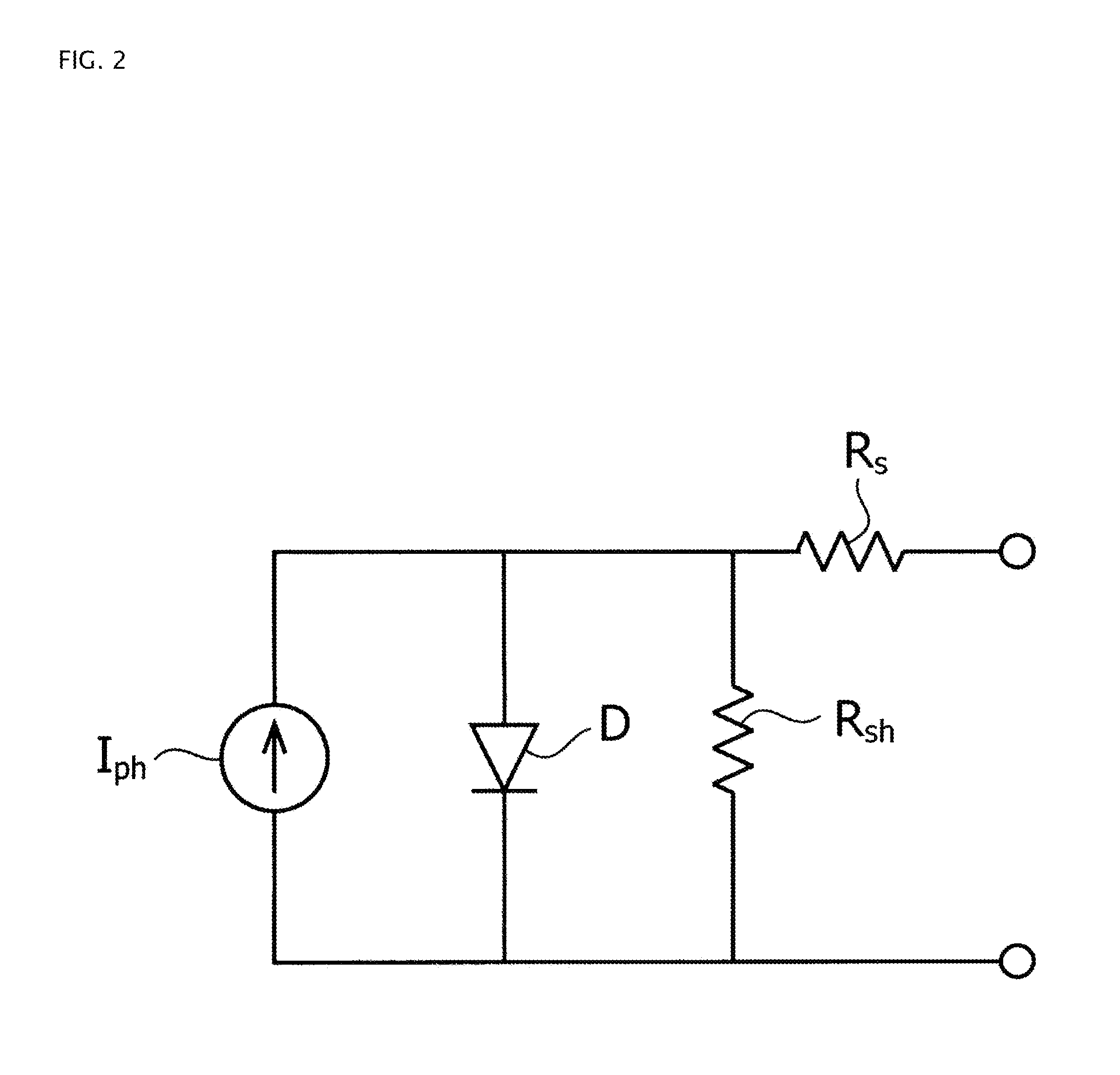Method for manufacturing photovoltaic cell
a photovoltaic cell and manufacturing technology, applied in the field of photovoltaic cell manufacturing, can solve the problems of photoelectric conversion performance deterioration and absorption loss, and achieve the effects of reducing resistance, efficiently preventing the deterioration of photoelectric conversion performance, and reducing the resistan
- Summary
- Abstract
- Description
- Claims
- Application Information
AI Technical Summary
Benefits of technology
Problems solved by technology
Method used
Image
Examples
first embodiment
[0060]A method for manufacturing a photovoltaic cell in a first embodiment of the invention will be described below. As shown in FIG. 1, a photovoltaic cell 1 in the first embodiment of the invention has a laminate structure in which a first electrode 3, a photoelectric conversion layer 4 and a second electrode 5 are laminated on one surface of a substrate 2 in this order. An impermeable plastic substrate is used as the substrate 2, and the second electrode 5 side serves as the light receiving side. A heat-resistant plastic substrate such as a PI (polyimide) based film, a PEN (polyethylene naphthalate) based film, a PES (polyether sulfone) based film, a PET (polyethylene terephthalate) based film, an aramid based film, etc. may be used for an impermeable flexible substrate as the substrate 2. Moreover, a conductive substrate such as stainless steel foil, or a glass substrate or the like other than flexible substrates may be used as the substrate 2.
[0061]The first electrode 3 is arra...
second embodiment
[0078]A method for manufacturing a photovoltaic cell in a second embodiment of the invention will be described below. A fundamental form in the method for manufacturing a photovoltaic cell in the second embodiment is the same as that in the method for manufacturing a photovoltaic cell in the first embodiment. Elements similar to those in the first embodiment will be described using similar reference signs and names to those in the first embodiment. Here, description will be made on a different configuration from that of the first embodiment.
[0079]As shown in FIG. 4, a photovoltaic cell 20 in the second embodiment has a laminate structure in which a first electrode 3, a photoelectric conversion layer 21 and a second electrode 5 are laminated on one surface of a substrate 2 in this order.
[0080]The photoelectric conversion layer 21 has a first photoelectric conversion unit 22a laminated on the first electrode 3, a second photoelectric conversion unit 22b laminated on the first photoele...
third embodiment
[0088]A method for manufacturing a photovoltaic cell in a third embodiment of the invention will be described below. A fundamental form in the method for manufacturing a photovoltaic cell according to the third embodiment is the same as that in the method for manufacturing a photovoltaic cell in the first embodiment. Elements similar to those in the first embodiment will be described using similar reference signs and names to those in the first embodiment. Here, description will be made on a different configuration from that of the first embodiment.
[0089]As shown in FIG. 5, a photovoltaic cell 30 in the third embodiment has a laminate structure in which a first electrode 32, a photoelectric conversion layer 33 and a second electrode 34 are laminated on one surface of a substrate 31 in this order. An impermeable plastic substrate is used as the substrate 31, and the second electrode 34 side serves as the light receiving side. In addition, similar materials to those for the substrate ...
PUM
 Login to View More
Login to View More Abstract
Description
Claims
Application Information
 Login to View More
Login to View More - R&D
- Intellectual Property
- Life Sciences
- Materials
- Tech Scout
- Unparalleled Data Quality
- Higher Quality Content
- 60% Fewer Hallucinations
Browse by: Latest US Patents, China's latest patents, Technical Efficacy Thesaurus, Application Domain, Technology Topic, Popular Technical Reports.
© 2025 PatSnap. All rights reserved.Legal|Privacy policy|Modern Slavery Act Transparency Statement|Sitemap|About US| Contact US: help@patsnap.com



